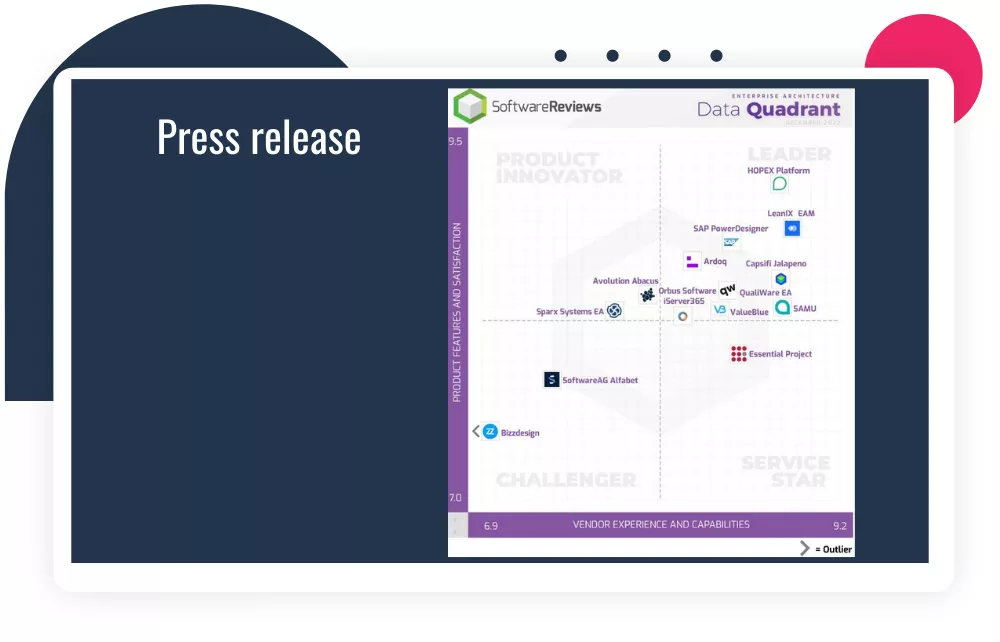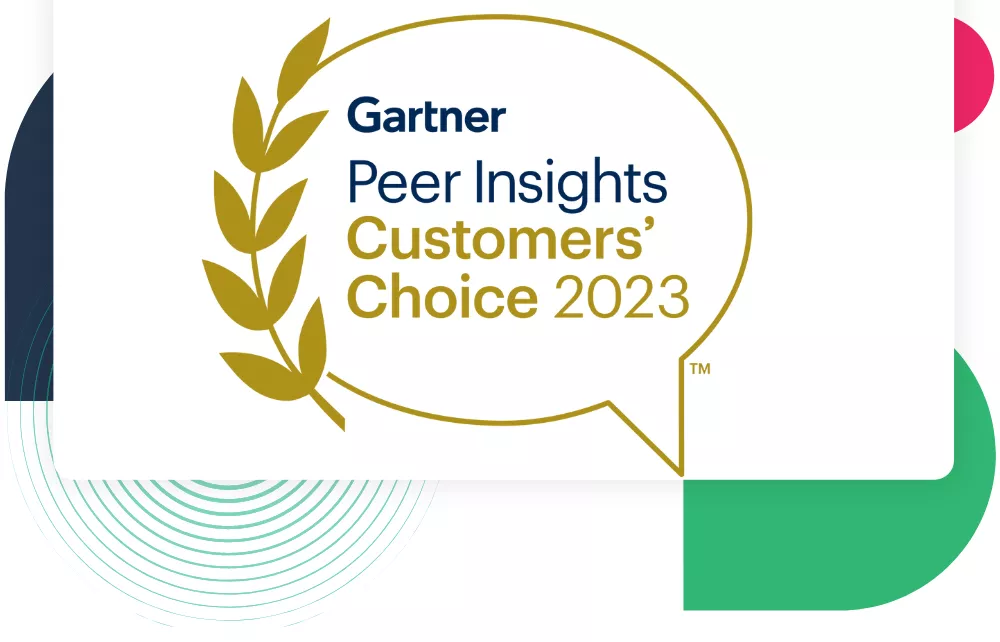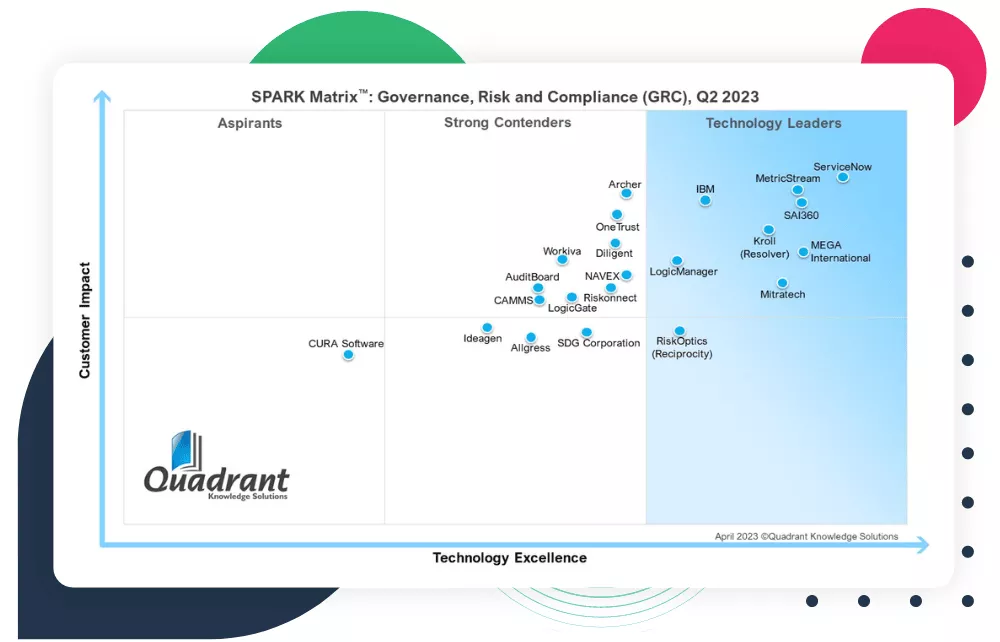
Connecting Data Governance with Strategic Initiatives
Despite the accepted need for an effective data governance program, many companies struggle to efficiently demonstrate the value of these programs. Linking data governance and enterprise architecture can ensure that data initiatives support business needs.
Frédéric Fourquet, a Product Marketing Manager at MEGA International and Crystal Singh, the Research Director at Info-Tech Research Group, took some time to delve deeper into issues surrounding data governance and enterprise architecture at the MEGA EA Exchange 2022 digital conference.
The Rise in Data Governance Initiatives
Recently, there has been a rise in data governance initiatives across a broad range of industry sectors due to the complexity of various pieces of new legislation. Crystal Singh believes there are two main drivers behind this increase.
“In terms of what some of the drivers are, I like to bucket these drivers into two categories. I think of the first category as conformance. And when I say conformance, you'll find that organizations may be driven to establish a data governance program to meet their regulatory and compliance obligations. They're looking to establish data governance to meet their privacy and security requirements.
For instance, if you're in a public space, you may be driven to work on data governance because of a particular data governance act or piece of legislation. So, that's our conformance bucket area. We can think of it as one category of drivers for data governance. The next category, or the next bucket area, for data governance, are those organizations that are looking to drive performance. Those organizations that are looking to leverage and go beyond the status quo to get more value from their data. They're looking to drive data-driven decision-making. In my perspective, these are the two main bucket areas of drivers.”
The Importance of Delivering Business Value
Delivering value to businesses by supporting key strategic initiatives, value streams, and business capabilities is critical in data governance. Crystal explains the value she sees in linking data governance to enterprise architecture.
“Any big enterprise initiative must be able to deliver business value and ensure the return on the investment. Data governance is no different. Our approach to establishing data governance is firmly etched in aligning all that work, all those items on that data governance roadmap, and all those milestones that you are going to be plotting and allocating resources and time to. We advocate ensuring that all those initiatives align with the core business capabilities of the organization, which in turn drives the value streams of the organization, which in turn drives those core business objectives by aligning to enterprise architecture and specifically the business architecture discipline of enterprise architecture.”
To drive data governance initiatives, this approach provides a direct view of real business needs with direct mapping on where to invest time and resources to drive change.
“When we think of enterprise architecture, we think specifically of business architecture, that is, the mapping of business capabilities. To have a business capability map, you should think of a sort of visual representation of your organization's business capabilities. It represents a view of potentially what and where your data governance should ramp up and should provide support. Instead of linking data governance back to your business architecture, which is part of your enterprise architecture, you need to ensure that you're aligning your work and your effort to real business capabilities, which in turn will drive the real objectives of the organizations. “
In return, it is a way to efficiently leverage resources. “On top of that, you've got to demonstrate business value when you align directly with core business capabilities. These business capabilities have got measures/KPIs behind them.
For a data governance leader, it is important to align with these core business capabilities, to be able to leverage these KPIs to demonstrate the value that the data governance initiative has delivered. It is also possible to improve the quality of the data and resolve issues such as ambiguity in data change by creating a data catalogue.
“When you've done all of that, you've improved data quality, for instance, which in turn has improved reporting. Data work and data governance work must align with real business needs and real business capabilities. This is all under the umbrella of business architecture and enterprise architecture.”
How Data Governance Improves Data Quality
It’s difficult to understate the importance of linking a data governance strategy to the practicalities of what is going on in a company. The aim of data governance is data compliance and data quality. However, many organizations struggle with those topics. According to Crystal, data governance helps produce and improve data quality, as well as establish a sustainable data quality management program.
“From my experience and my perspective, if we were to embark upon a data quality management initiative or program without establishing data governance, we're going to find ourselves in a perpetual cycle of always having to clean up data. While we recognize that data quality is optimal, let's establish some core components of data governance that will give us the foundation to address data quality issues and sustain good data quality.
If we haven't got that mechanism to address issues, come up with the fixes, apply the fixes, approve the fixes, as well as sustain the behaviour around that going forward, we may find ourselves fixing the same data issues six months down the road again.”
Defining Roles in Data Governance Programs
Every organization will be different when defining data governance roles. This is vital to ensure that the data governance work is done.
“To get started in data governance, it is important to first work on building a data catalogue, a data inventory and classifying the data. When you think realistically, the question is, how to support all these data tasks in the organization? This is where the core data governance roles spring into action”, says Crystal.
“When we think of data governance roles, we think typically of roles like data stewards. We also think of subject-matter experts or people on the business side of things that are non-IT, as well as data owners - or data trustees in the public sector space. As part of establishing a data governance program, we strongly advocate early upfront definitions of what those roles are going to be.”
Taking that extra step to define what's behind those roles helps to clarify the positions. Formally defining these roles will give the capacity and bodies to rely on to get the work done.
“When you unpack what is behind the roles, a lot of people may already be functioning in that capacity. That is where the leader of data governance must play the right role in helping to ramp up the data stewards and the data owners. It's not going to happen overnight. Realistically, we must cater for people that might be a little bit resistant.
We need to get creative in how we bring them along by demystifying things and providing the right level of training and onboarding to set people up for success.”
AI and Data Governance
AI is a hot topic for many corporate professionals. Are there AI cases that would provide more momentum for the data governance side? Crystal has a nuanced viewpoint on the subject.
“The reality is that AI isn't a magic wand. It still relies on good-quality data. If we're looking to push the envelope and do more with data, we've got to ensure that we still have this foundation of data governance. It still requires us to have a good data foundation, of which data governance is one of the core disciplines.
As part of that AI journey, the early days should be spent setting up a strong data governance foundation. This goes back to one of our first drivers, which is performance, wanting to do more with data. Therefore, we've got to build our data foundation, which is data governance.”
Data Governance Best Practices
To implement an effective strategy, business leaders should follow the best practices for data governance. Crystal Singh highlighted this need for best practices.
“As you embark upon your data governance, you want to ensure that it's aligned with the real needs of the organization. “
Data governance often starts with the very best intentions, but if it remains at the side of someone's desk, it loses momentum. Companies need to start working on defining where data governance is going to live. Who is going to be driving this entire data governance ship? We know it isn't a one-person show, but there's got to be a person, a role and an office that's driving it.
“What I strongly advocate in data governance is making sure that we demystify what data governance is. It's often misunderstood. We conjure up thoughts of bureaucracy and control. That's not what data governance is. It's meant to be just the opposite. It's meant to be an enabling framework, to promote the use of data, and to drive that appetite for data. It's putting up the right guardrails around the data. So out of the gate, we've got to demystify and clarify what data governance is and articulate what's in it for an organization.”
MEGA Leadership Related Content
See the Bigger Picture and Accelerate Business Value
Discover how organizations rely on us to transform their IT
Hear More From Companies Like Yours







